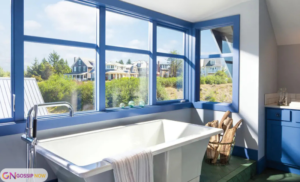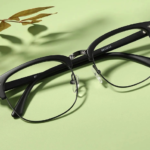Window frame are more than just structural supports for glass panes; they play a pivotal role in a home’s aesthetics, energy efficiency, and overall comfort. Whether you’re considering a new installation, facing repair challenges, or seeking design inspiration, understanding window_frames is essential.
In this guide, we’ll delve into various window frame materials, discuss maintenance and replacement strategies, and explore decorative options to enhance your living space.
Wood Window Frames: Timeless and Elegant
 Wood window_frames bring unmatched charm to a home. They’re perfect for older houses or anyone going for a classic look. The natural grain and warm tones of wood add character to both interiors and exteriors. Plus, they can be painted or stained to match your exact style.
Wood window_frames bring unmatched charm to a home. They’re perfect for older houses or anyone going for a classic look. The natural grain and warm tones of wood add character to both interiors and exteriors. Plus, they can be painted or stained to match your exact style.
But wood does require more upkeep. You’ll need to stay on top of repainting or sealing them every few years to protect against moisture and insects. That said, with care, wooden window frames can last for decades and even improve your home’s value.
Understanding Window Frame Materials
1. Wood Window Frames
Wood window_frames offer timeless elegance and excellent insulation. They can be painted or stained to match your interior decor. However, they require regular maintenance to prevent issues like rot and insect damage. Wood frames are also among the more expensive options. They’re ideal for traditional or historic homes where aesthetic appeal is paramount.
2. Aluminum Window Frames
Aluminum window_frames are known for their strength and slim profiles, allowing for larger glass areas. They’re durable and low maintenance but conduct heat and cold, making them less energy-efficient unless equipped with thermal breaks. Aluminum frames suit modern architectural styles.
3.Vinyl Window Frames
Vinyl window_frames are cost-effective and require minimal upkeep. They’re resistant to moisture and don’t need painting. However, they offer limited color options and can warp under extreme temperatures. Vinyl is a popular choice for homeowners seeking affordability and energy efficiency.
4.Fiberglass Window Frames
Fiberglass window_frames are highly durable and offer excellent insulation. They resist warping and can be painted to match your home’s color scheme. While more expensive than vinyl, their longevity and performance can justify the cost.
5.Composite Window Frames
Composite window_frames combine materials like wood fibers and polymers, offering the appearance of wood with enhanced durability and lower maintenance. They’re energy-efficient and environmentally friendly but can be pricier than vinyl.
Key Components of a Window Frame
When it comes to maintaining and designing your windows, understanding the various components of a window frame is essential. Each part plays a crucial role in the functionality and aesthetics of the window. Let’s explore these components:
-
Head: To begin with, the head is the top horizontal part of the window_frame. It provides structural support and completes the upper section of the window.
-
Sill: Moving downward, the sill is the bottom horizontal part of the frame. Often sloped, it facilitates water drainage away from the window to prevent moisture accumulation.
-
Jambs: On either side, the jambs are the vertical components of the frame. They support the window structure and house mechanisms for opening and closing.
-
Apron: Beneath the sill, the apron serves as a decorative trim on the interior side of the window. It enhances the visual appeal and conceals joints or gaps.
-
Weep Holes: At the base, weep holes are small openings designed to allow water to drain from the frame. Consequently, they prevent water buildup and potential damage.
By familiarizing yourself with these parts, you can make informed decisions regarding window maintenance and design, ensuring both functionality and style.
Choosing the Right Window Frame Material for Your Home
When you’re designing or renovating your home, one small yet mighty detail you can’t overlook is the window_frame. While often underestimated, window_frames not only support the glass but also affect insulation, aesthetics, and long-term durability. Whether you’re after classic charm or sleek modern lines, your window_frame choice matters more than you might think.
From traditional wood to contemporary aluminum, the material you pick will shape how your windows look, feel, and perform. Let’s break down the key differences between wood, aluminum, vinyl, fiberglass, and composite options so you can find the perfect fit.
Window Frame Repair and Replacement
Repairing Window Frame
Regular maintenance can extend the life of your window_frames. For wooden frames, this includes sealing, painting, and checking for signs of rot. Aluminum frames may require cleaning and checking for sealant degradation.
Steps for Repair:
-
Inspect for damage or decay.
-
Remove any deteriorated material.
-
Fill gaps with appropriate filler or sealant.
-
Sand and finish the surface.
-
Apply protective coatings as needed.
Replacing Window Frame
When repairs are no longer viable, replacement becomes necessary. This process involves removing the old frame and installing a new one, ensuring proper insulation and sealing to enhance energy efficiency.
Considerations:
-
Choose materials that suit your climate and aesthetic preferences.
-
Ensure proper measurements for a snug fit.
-
Hire professionals for installation to guarantee performance.
Vinyl Window Frames: Affordable and Efficient
 Vinyl is a crowd-pleaser — and for good reason. Vinyl_window_frames are affordable, durable, and super low-maintenance. They’re resistant to moisture, mold, and UV rays, so they won’t warp, peel, or rot over time. Plus, their built-in insulation properties help improve energy efficiency.
Vinyl is a crowd-pleaser — and for good reason. Vinyl_window_frames are affordable, durable, and super low-maintenance. They’re resistant to moisture, mold, and UV rays, so they won’t warp, peel, or rot over time. Plus, their built-in insulation properties help improve energy efficiency.
One trade-off? They’re not as customizable in terms of color or design. Still, for many homeowners, the convenience and value of vinyl m
Enhancing Window Frame Aesthetics
Beyond functionality, window_frames contribute significantly to a home’s interior and exterior design. Consider these decorative options:
-
Color Choices: Paint or stain frames to complement your decor.
-
Trim and Molding: Add decorative elements for a refined look.
-
Window Treatments: Use curtains, blinds, or shades to enhance visual appeal.
-
Hardware Selection: Choose handles and locks that match your style.
Bio Table
| Field | Details |
|---|---|
| Name | Olivia Carter |
| Expertise | Home Design, Architecture, DIY Windows & Doors |
| Experience | Over 12 years in interior design and residential construction |
| Published On | April 24, 2025 |
Conclusion
Your window_frame isn’t just a structural necessity — it’s a design detail that plays a major role in your home’s comfort, energy efficiency, and style. Whether you go with wood for its warmth, vinyl for convenience, or fiberglass for all-weather durability, make sure your choice fits both your aesthetic and functional needs. With the right frame and a bit of care, your windows can be a beautiful and efficient part of your home for years to come.
FAQs
Q1: How often should I inspect my window frames?
Regular inspections, at least annually, can help identify issues early and prolong the lifespan of your frames.
Q2: Can I switch from aluminum to wood frames?
Yes, but it requires careful planning to ensure structural compatibility and may involve additional costs.
Q3: Are metal window frames energy-efficient?
Without proper insulation, metal frames can conduct heat and cold. However, modern designs often include thermal breaks to improve efficiency.
Q4: What is the lifespan of a typical window frame?
Depending on the material and maintenance, window frames can last between 20 to 50 years.
Q5: How can I enhance the security of my window frames?
Installing robust locks, using laminated glass, and ensuring frames are in good condition can improve security.






